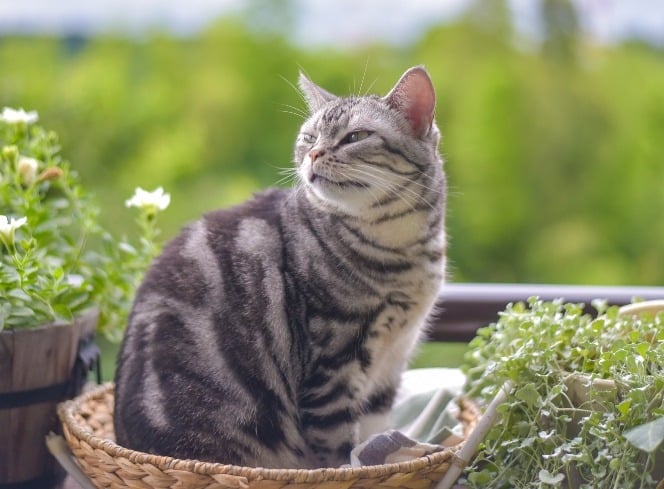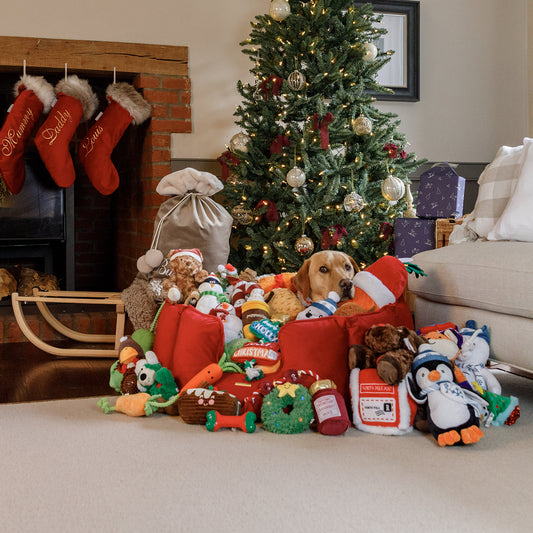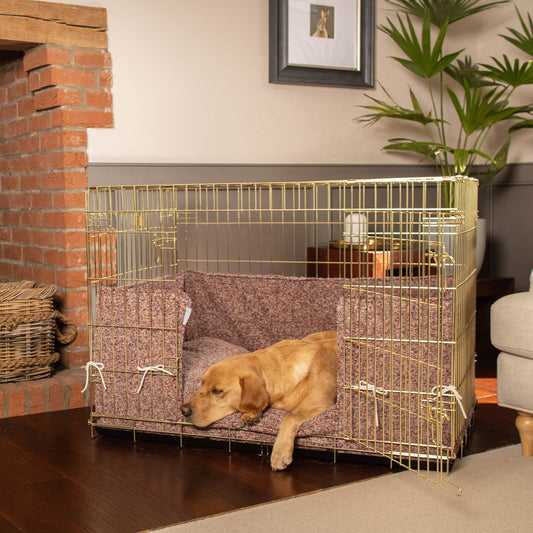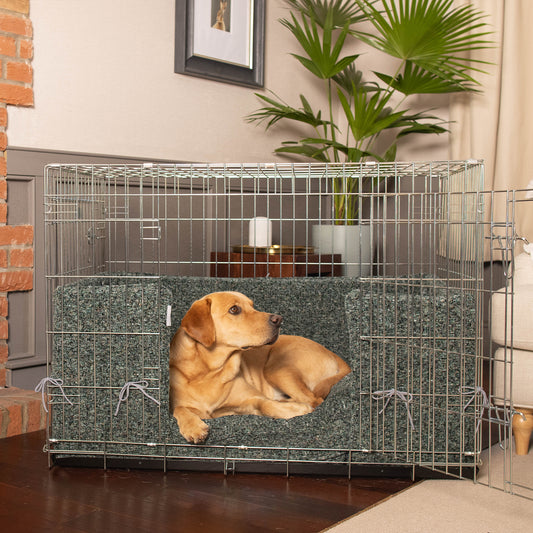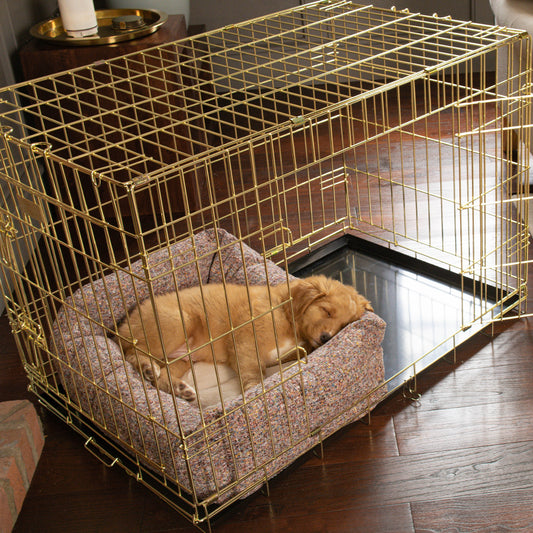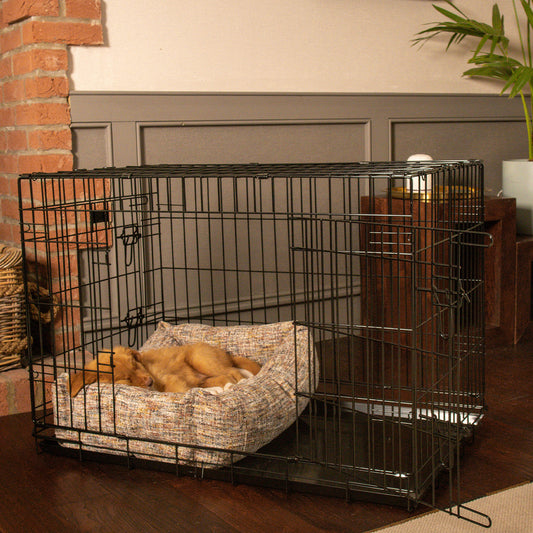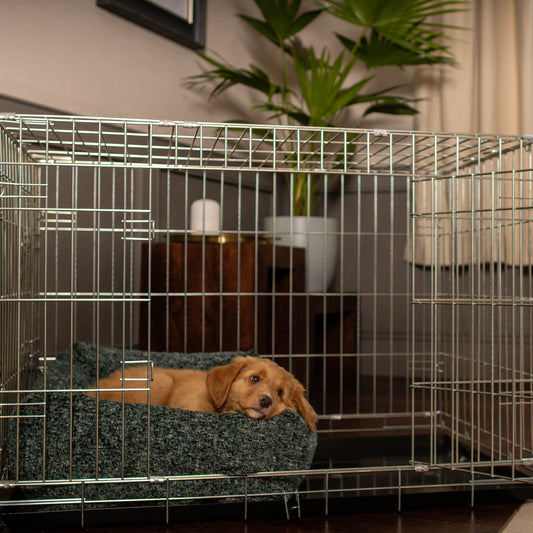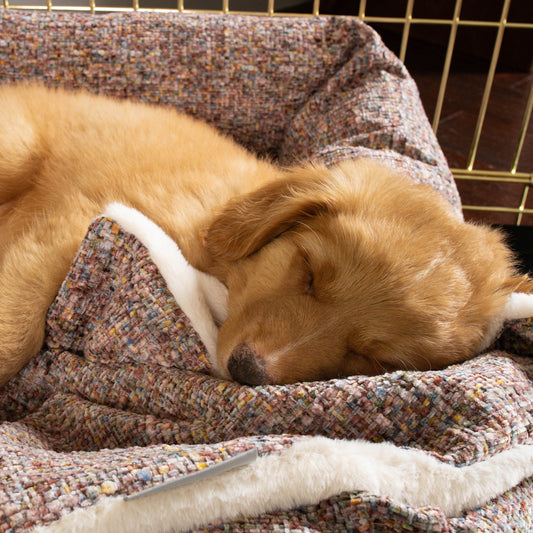Every dog is different, some love a dip in a creek or pond and others treat water like the enemy. But can all dogs swim? The short answer is yes but in this blog, we will look at dogs swimming in a little more detail, explore what bodies of water are best for those pet parents who do want to take their dog swimming and discover the swimming essentials you'll need.
Can Dogs Swim?

A lot of dogs know how to do doggy paddle from the moment they first put their paws in the water and can be trained to become strong swimmers with a little practice. Swimming is a great way to make amazing memories with your dog, especially in the warm summer months, however, there are a few things to keep in mind when swimming with your dog.
Studies have shown swimming is a great stress reliever for dogs and improves their mental well-being. Having a varied range of exercises for your dog will help keep them sharp and happy. It’s also a great form of low-impact and non-weight-bearing exercise, this allows your pooch to enjoy the benefits of exercise without putting too much stress on their joints and tendons as the water will take on most of their weight.
Whether your dog takes to swimming like a duck to water or if they’re a little more hesitant, swimming is a great skill to teach your precious pooch to ensure they’re safe whenever you are around a body of water. The ‘doggy paddle’ swim movement is identical to how your dog moves their paws when walking so with a little help all dogs should be able to pick up swimming with a little help.
Some breeds are more natural when it comes to swimming and others may find it a little more challenging. Certain breeds like Labrador Retrievers and Portuguese Water Dogs were developed to be strong swimmers. Their body structures lend themselves to being stronger swimmers and so often these breeds will love nothing more than a splash in the water.
Other breed's body structures may not lend themselves as well to being natural swimmers, but this doesn’t mean they can’t learn with a little help and a life jacket. It’s important to be careful with breeds whose weight distribution doesn’t lend itself to being a natural swimmer – such as bulldogs or dachshunds and also as with all exercise make sure any flat-faced breeds don’t go too far so they’re not too out of breath.
If your dog isn’t a natural water baby, then start by teaching them to not be scared of the water and progress from there. Start slowly introducing them to the water and give them plenty of praise so they being to associate being in the water as a positive thing.
Even dogs that naturally start to doggy paddle will need a little practice, to begin with, they will likely splash a lot and tire quickly but with a little more time they will be able to keep their bodies afloat and will be able to build up their stamina.
Safety First
- Use A Floatation Device - Float Coats have strategically placed foam panels to support your dog in its natural swimming position to give them optimal buoyancy. They also have handles so you can give your dog assistance when getting in and out of the water. These are great for helping your dog become more comfortable in the water and keeping them safe.
- Stay Close - Always supervise your dog when swimming to ensure they’re keeping their head above water, aren’t swallowing too much water, and aren’t getting too tired.
- Shallow To Start - Keep them in a shallow body of water with easy entry and exit points to begin with while they find their sea legs.
How Far Can Dogs Swim?

This massively depends on your dog’s breed, fitness, and the body of water they’re swimming in. The distance your dog can swim will depend on how long their legs are, the tinier the legs the tinier the paddles so they won’t be able to swim as far as a dog with longer legs. Likewise, active dogs are going to be able to keep themselves afloat for longer, maybe around 20-30 minutes compared to other less active dogs who may only need 10-15 minutes. You know your dog best so take it steady to begin with and build it up from there to a distance that they’re comfortable with – this could be anywhere from 5 – 60 minutes.
Ideally, keep beginners swimming sessions to under ten minutes at a time to help avoid fatigue and drowning. You can then slowly build up their swimming from here to up to 30 minutes.
Can’t get your dog to stay in the water for 10 minutes? Don’t worry, some dogs just need a little more encouragement, why not try enticing them in with a water toy or a ball? Don’t worry about pushing it, just take it slowly and it’s okay if they just get their paws wet for the first couple of sessions. It’s important to keep the first few sessions fun and at their own pace so they can start to develop positive associations with the water and can come to love it over time.
Once your dog is more comfortable being in and around water you can begin to gradually increase the time they spend in the water and the distance they are swimming. Your dog will then be a water baby in no time!
Remember puppies and senior dogs may tire quicker than adult dogs so just keep your eye on them and take them out once they begin to become fatigued.
Can Dogs Swim In Cold Water?
Average sea temperatures in the UK in winter are 6-10 degrees compared to summer temperatures of 15-20 degrees. Generally speaking, if the water is too cold for you it’s probably too cold for your dog but it all depends on how long your dog is going to be in the water.
A quick splash in a cold body of water will usually be okay for a healthy dog, however prolonged periods could lead to issues such as hypothermia or frostbite. So, our advice is to keep the winter dips short and sweet and just make sure to dry them off post-swim to help warm them back up.
Can Dogs Swim In Chlorine Pools?

Swimming pools are great for teaching your dog to swim, they don’t have all the same risks such as currents and sharp objects that open water has. However, they don’t come without their risks.
Short swimming sessions in balanced chlorine pools are usually harmless but over-exposure to some of the pool chemicals may irritate your dog’s eyes, skin, coat, and ears. If the pool’s chlorine level is properly balanced, then it will generally not be harmful in small doses for your dog. We advise making sure there is always access to clean, fresh drinking water so they don’t begin to see the pool as their personal water bowl.
If your dog enjoys swimming in the pool, then let them. Make sure to limit their time in there as mentioned above so they don’t become too fatigued. Try encouraging them out of the pool after half an hour for a break, drink, and use the bathroom.
Should I Rinse My Dog Off After The Pool?
We recommend rinsing your dog off after swimming in any body of water, this will help limit their exposure to chemicals such as chlorine from pools or help to clear off any dirt or sand that may have become trapped in their fur in lakes or sea.
After every swim, rinse your dog off with cool water, we recommend rinsing them for a little longer than you think is necessary to make sure all the dirt or chlorine has been removed. You can then towel dry them and clean their paws and ears to keep them warm and prevent any infections.
Can Dogs Swim In The Sea?

Your dogs can spend the same amount of time swimming in the sea as they do in other bodies of water, again the length of time will depend on their breed and other physical factors such as age and stamina.
When swimming in the sea there are just a few things to watch out for to keep your dog as safe as possible:
- Make sure they’re not drinking the seawater. The salt can be hazardous for them so ensure that they are well hydrated before swimming and provide some fresh, clean drinking water for them once they come out.
- Salt water can be drying for your dog’s skin and coat, make sure to wash them off after a day at the beach to ensure their coat stays nice and silky and to wash out any sand they make have become trapped in their fur.
- Check it’s a dog-friendly beach before going – a lot of beaches in the UK have restrictions based on the time of day and time of year when you’re allowed to take your dog on the beach. There are some great dog-friendly beaches all over the UK though so do your research, we've listed some of our favourite coastal spots here.
- Assess the sea conditions before taking your dog in the water – if it is a rough day then maybe avoid taking them in to avoid any dangers. Calmer currents are much safer for both you and your dog.
- If your dog doesn’t seem keen don’t force them in, this can be distressing both you and them. Let them go in of their own accord and you can try a treat or a toy to incentivise them in.
- Start with the shallow water and let your dog show you how deep they’re comfortable going.
- Lastly remember not all dogs will like the sea, so just follow your dog’s lead, and keep them in their comfort zone. Slow and steady is the best course of action when it comes to dogs and water.
Can Dogs Swim In Lakes?
Taking your dog to the lake is a great way to make summer memories but as with the sea and pools, there are a few things you need to bear in mind.
- Assess and find a shallow area with an easy entrance and exit point.
- Check for any dangerous debris – branches, metal, rubbish – anything that could harm you or your pooch – find a clear spot.
- We can’t stress this point enough – go at your dog’s pace and don’t force them in.
- Have treats and toys on hand to make it a fun experience for both you and them.
- Check if the water is calm – avoid going in rough water to ensure both yours and your dog’s safety.
- Blue-green algae is toxic for dogs and can, unfortunately, be found in many water bodies throughout the UK. Check the water and avoid any waterways with blue-green algae warnings.
- Have fresh drinking water available and make sure your dog doesn’t drink the lake water.
How Do I Dry My Dog After Swimming?
We recommend rinsing and drying your dog after going into any body of water. This just helps to remove anything that may have gotten trapped in your dog’s fur and will help to stop any infections.
We recommend using a drying coat as an easy, fuss-free way to dry your dog off after a quick dip. They are usually made from a super absorbent towelling that will help to wick moisture away from your dog and keep them warm when they need it most. They fasten with either velcro or poppers so your dog can walk back to the car wearing their drying coat and stay cosy and warm.
Our Lords & Labradors Drying range is made out of a super-soft bamboo fabric which is double layered to make it extra absorbent. The range includes a drying coat, bed cover and mitts, all designed to help make drying your dog as easy as possible. It comes in four stylish colours and a big range of sizes so you're sure to find the perfect fit.
For long-eared dogs, it’s also super important to make sure their ears are clean and dry as long ears are prone to infections.
































































